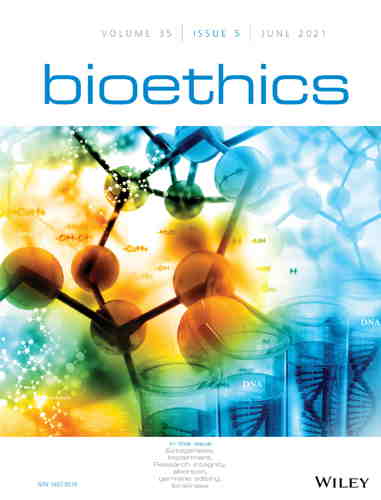Clinical trials of germline gene editing: The exploitation problem
By Erik Malmqvist,
Bioethics
| 06. 14. 2021
Abstract
The birth of the world’s first genetically edited babies in 2018 provoked considerable ethical outrage. Nonetheless, many scientists and bioethicists now advocate the pursuit of clinical uses of human germline gene editing. Progress towards this goal will require research, including clinical trials where genetically edited embryos are implanted into a woman’s uterus, gestated, and brought to term. This paper argues that such trials would likely conflict with the fundamental research ethical requirement of non-exploitation. This is because they would expose people who are in a vulnerable situation to risks and burdens that are substantial and not obviously offset by compensating benefits. I consider how the potential for exploitation in such trials might be mitigated, arguing that a feasible and justifiable approach is not easily found. If this analysis is correct, there is a significant ethical obstacle on the path towards clinical use of human germline gene editing.
1 INTRODUCTION
In late 2018, He Jankui announced the birth of Lulu and Nana, the world’s first human beings born with an edited genome.1 The Chinese scientist had used the novel...
Related Articles
By Grace Won, KQED [with CGS' Katie Hasson] | 12.02.2025
In the U.S., it’s illegal to edit genes in human embryos with the intention of creating a genetically engineered baby. But according to the Wall Street Journal, Bay Area startups are focused on just that. It wouldn’t be the first...
Several recent Biopolitical Times posts (1, 2, 3, 4) have called attention to the alarmingly rapid commercialization of “designer baby” technologies: polygenic embryo screening (especially its use to purportedly screen for traits like intelligence), in vitro gametogenesis (lab-made eggs and sperm), and heritable genome editing (also termed embryo editing or reproductive gene editing). Those three, together with artificial wombs, have been dubbed the “Gattaca stack” by Brian Armstrong, CEO of the cryptocurrency company...
By Lucy Tu, The Guardian | 11.05.2025
Beth Schafer lay in a hospital bed, bracing for the birth of her son. The first contractions rippled through her body before she felt remotely ready. She knew, with a mother’s pit-of-the-stomach intuition, that her baby was not ready either...
By Emily Glazer, Katherine Long, Amy Dockser Marcus, The Wall Street Journal | 11.08.2025
For months, a small company in San Francisco has been pursuing a secretive project: the birth of a genetically engineered baby.
Backed by OpenAI chief executive Sam Altman and his husband, along with Coinbase co-founder and CEO Brian Armstrong, the startup—called...




